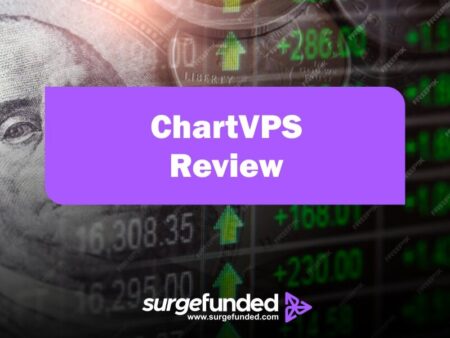Risk management tools for funded accounts in the trading industry is essential. Financial market volatility can result in large profits, but if it is not properly managed, it can also cause large losses. Using strong risk management tools for funded accounts is crucial for traders using funds supplied by investors or prop firms in order to safeguard their capital and optimize returns.
With an emphasis on their features, advantages, and potential to improve trading performance, this article examines some of the top risk management tools for funded accounts.
The Importance of Risk Management In Trading
Risk management is the process of recognizing, evaluating, and controlling risks to an investor’s money and profits. It entails establishing policies and procedures to reduce possible losses and increase profits. The risks are much higher for traders who use sponsored accounts, when the capital is not theirs. Good risk management facilitates:
- Capital Preservation: Preserving trading privileges requires safeguarding the funds the firm or investor has contributed.
- Emotional Decision-Making Reduction: A well-organized risk management strategy aids traders in adhering to their plans and avoiding snap judgments motivated by greed or fear.
- Increasing Profitability Over time, traders can improve their odds of steady profitability by practicing excellent risk management.
Risk Management Tools For Funded Accounts
1. Stop Loss Orders
The stop-loss order is one of the most basic risk management tools for funded accounts. To reduce possible losses, this program automatically closes a position when the price hits a preset level. Stop-loss orders come in a variety of forms:
- Standard Stop-Loss: Closes a Trade at a certain price.
- Trailing Stop-Loss: Follows the market price, protecting against losses while permitting possible gains.
In a funded account environment, where capital preservation is crucial, using stop-loss orders guarantees that traders do not sustain excessive losses on any one trade.
2. Calculators for Position Sizing
Calculators for position sizing assist traders in deciding how much money to put into each transaction based on their account size and risk tolerance. These tools guard against over-leveraging and guarantee that no trade can have a substantial effect on the total account balance by determining position sizes that correspond with a trader’s risk management plan.
For instance, a position sizing calculator can assist in figuring out how many lots or shares to purchase based on the stop-loss distance from the entry price if a trader chooses to risk 1% of their account on a trade.
3. Analysis of Risk-Reward Ratios
When assessing possible trades, it is essential to understand and compute the risk-reward ratio. This ratio contrasts a trade’s possible loss with its anticipated profit. A favorable risk-reward ratio, such as 2:1 or above, suggests that possible gains are greater than possible losses.
As part of their overall strategy, traders should strive for trades with a positive risk-reward ratio. Numerous trading systems come with built-in features that can automatically determine this ratio based on target prices, stop-loss levels, and entry locations.
4. Deal Cancellation Features
Certain trading platforms have special capabilities, such as deal cancellation options, which let traders cancel a trade within a predetermined window of time in the event that market conditions abruptly shift. When the market is erratic and traders may wish to review their positions without suffering quick losses, this tool can be quite helpful.
For example, deal cancellation capabilities offered by platforms such as easyMarkets allow traders to further reduce their risk while retaining trading freedom.
5. Volatility Indicators
Traders can evaluate market circumstances and modify their strategy with the aid of volatility indicators. Market volatility is measured with tools like Average True Range (ATR), which can help determine stop-loss levels and position sizes.
Traders can more effectively control the risks associated with abrupt price changes or market swings by understanding volatility tendencies, which enables them to make proactive strategy adjustments.
6. Risk Management Software
There are numerous software programs which are risk management tools for funded accounts. Traders may monitor their positions and evaluate the overall risk of their portfolios with the use of these products’ extensive analytics and reporting features. Among the well-liked choices are:
- SmartRisk: Financial advisors can use SmartRisk to analyze portfolio risks and make well-informed asset allocation decisions.
- FINCAD: A comprehensive platform that provides strong risk analysis capabilities together with multi-asset portfolio management.
In order to improve decision-making processes, these software programs frequently interface with trading platforms to offer real-time data and insights into market circumstances.
7. Broker Platforms with Advanced Features
Selecting a broker that provides advanced risk management tools for funded accounts is essential for profitable funded account trading. Brokers like as Pepperstone and AvaTrade offer platforms with a range of analytical tools to facilitate efficient risk management:
- AvaTrade: Provides a wide range of technical analysis tools and automated trading via MetaTrader Expert Advisors (EAs).
- Pepperstone: Renowned for its lightning-fast execution times and razor-sharp spreads, this firm also provides advanced charting tools that are appropriate for seasoned traders.
By choosing a broker with robust risk management tools for funded accounts, traders may be confident they have access to the necessary resources for efficient capital preservation.
Techniques for Using Risk Management Instruments
Traders should follow these best practices to get the most out of these risk management tools for funded accounts:
- Make a thorough trading plan that outlines precise guidelines for position sizing, stop-loss levels, entry and exit points, and profit targets.
- Frequently Evaluate Performance: Examine previous transactions to find trends in both wins and losses, then modify your approach accordingly.
- Keep Up with Market Conditions: Follow developments in the economy that may affect market volatility and modify your trading strategy as needed.
- Exercise Self-Control: Even in times of emotional turmoil, follow your established guidelines; don’t stray from them because of transient market swings.
- Continue to Educate Yourself: Continue your knowledge about risk management and new trading tactics by taking advantage of online courses or mentorship possibilities.
In conclusion
Successful trading with funded accounts requires effective risk management. Traders can protect their cash while optimizing profit potential by combining stop-loss orders, position sizing calculators, volatility indicators, deal cancellation capabilities, and specialist software solutions.
Furthermore, by offering the resources required for well-informed decision-making, selecting the best broker with cutting-edge risk management tools improves the trading experience overall. Traders can more comfortably negotiate the intricacies of financial markets while safeguarding their capital from unanticipated hazards by following best practices when putting these tools into effect.
In the end, effective risk management tools for funded accounts that put long-term sustainability ahead of immediate profits are just as important to successful trading as technical proficiency. Traders can minimize their exposure to large losses and achieve consistent profitability by encouraging a disciplined approach to risk management within funded accounts.
Frequently Asked Questions
1. What Is Risk Management In Trading
- Risk management is the process of recognizing, evaluating, and controlling risks to an investor’s money and profits. It entails establishing policies and procedures to reduce possible losses and increase profits.
2. Importance Of Risk Management In Trading
- Capital Preservation: Preserving trading privileges requires safeguarding the funds the firm or investor has contributed.
- Emotional Decision-Making Reduction: A well-organized risk management strategy aids traders in adhering to their plans and avoiding snap judgments motivated by greed or fear.
- Increasing Profitability Over time, traders can improve their odds of steady profitability by practicing excellent risk management.
3. Techniques For Using Risk Management Tools
- Make a thorough trading plan that outlines precise guidelines for position sizing, stop-loss levels, entry and exit points, and profit targets.
- Frequently Evaluate Performance: Examine previous transactions to find trends in both wins and losses, then modify your approach accordingly.
- Keep Up with Market Conditions: Follow developments in the economy that may affect market volatility and modify your trading strategy as needed.
- Exercise Self-Control: Even in times of emotional turmoil, follow your established guidelines; don’t stray from them because of transient market swings.
- Continue to Educate Yourself: Continue your knowledge about risk management and new trading tactics by taking advantage of online courses or mentorship possibilities.

















